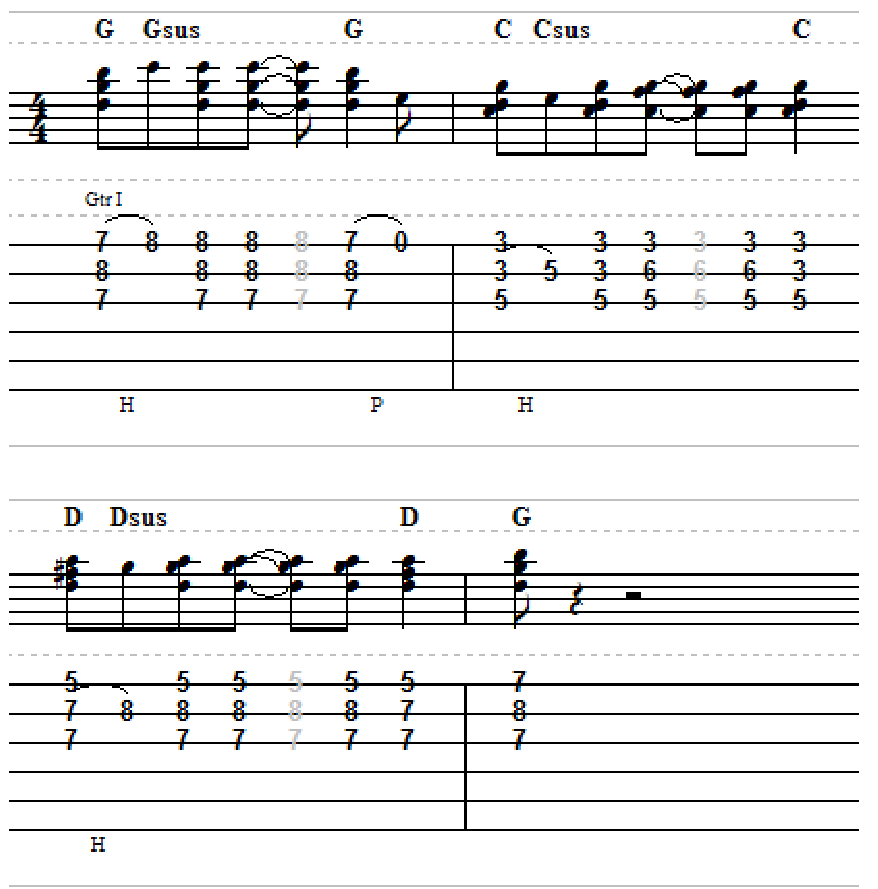This chart gives you three chord/family fretboard positions that help you play chords and chord-based licks all over the fretboard in any key. You can move automatically from I-IV-V in three different places on the guitar (per key) using the same three or four note chord fragments you played when we discussed the DAF formation lesson.

You can play at least three chord families for every key:
- A chord family with an F formation/I chord:
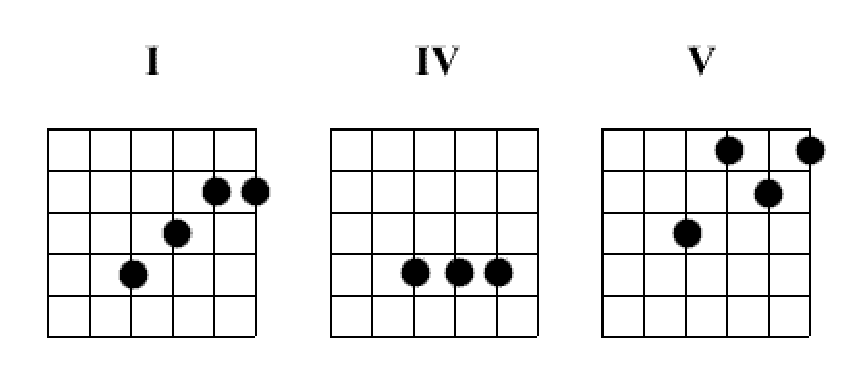
- A chord family with a D formation/I chord:
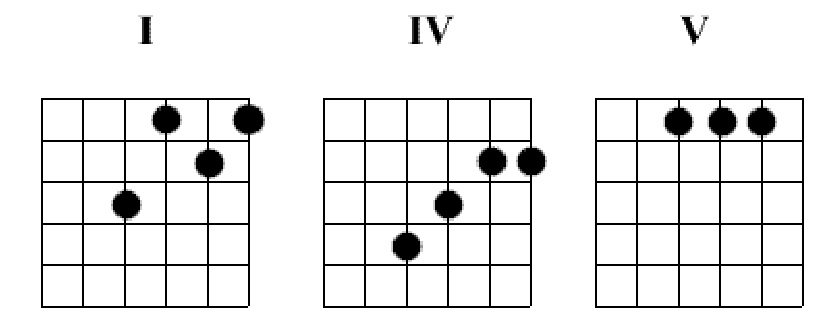
- A chord family with an A formation/I chord:
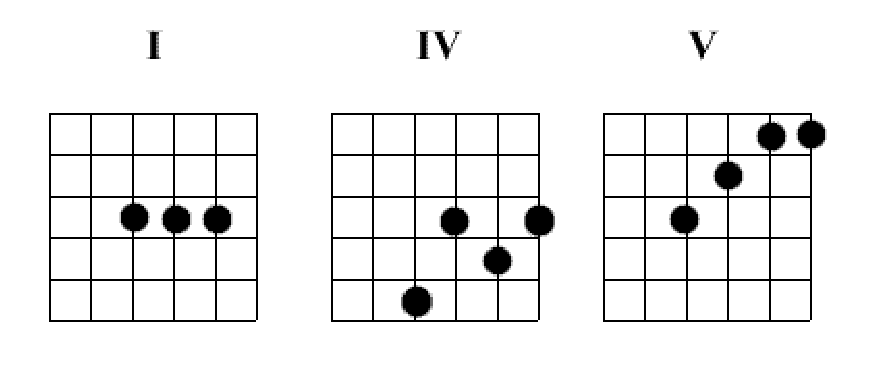
Remember that the A formation can look like this:
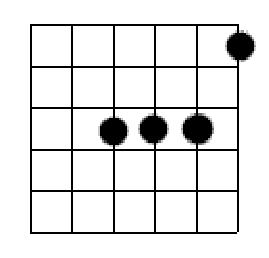
or this (barred):
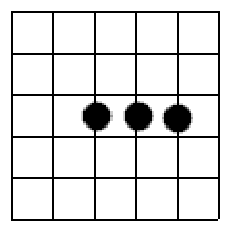
- The fret-relationships within each chord family are fixed. That means if you play in an F formation/I chord, the V chord is the D formation one fret lower in any key. For example:
Key of A:
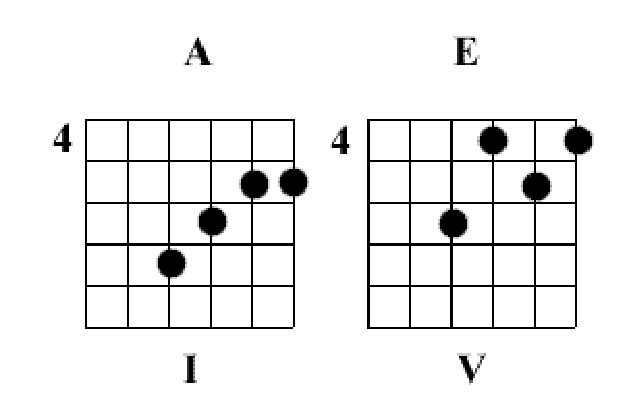
Key of C:
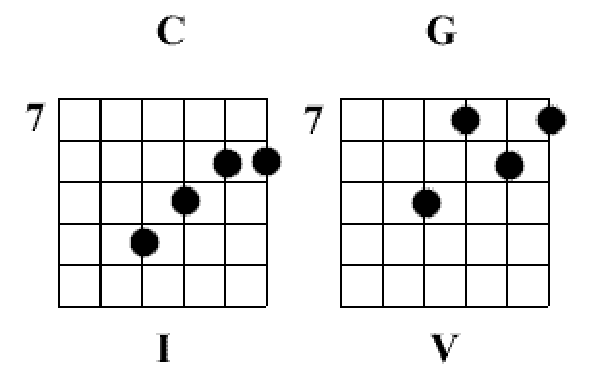
Key of D:
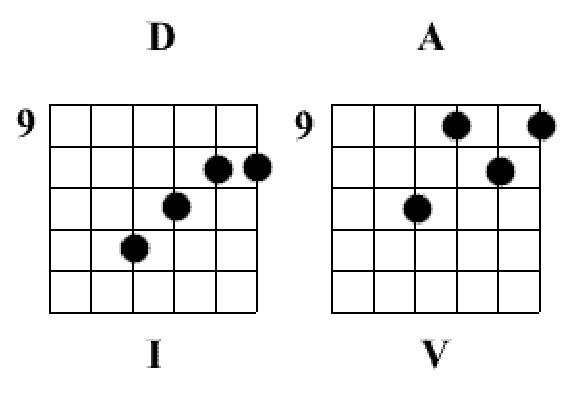
- You can locate the three chord families for any key by placing the root note of the I chords in the given places, like this:
I chords in the key of F (roots noted with “R”):

- You can find these I chords automatically once you have memorized
the DAF Formation. - You can play backup chords, licks, and solos by picking out arpeggios on the chord fragments.
Exercises:
Here are some chord fragment/chord family strumming patterns. They are all in the key of G and have a I-IV-V (G, C, D) chord progression.
Exercise 1:
There are two measures here that play together. The first bar, labeled “Gtr I” is the acoustic. The “Gtr II” is the other guitar, which plays the same thing at a different fret.
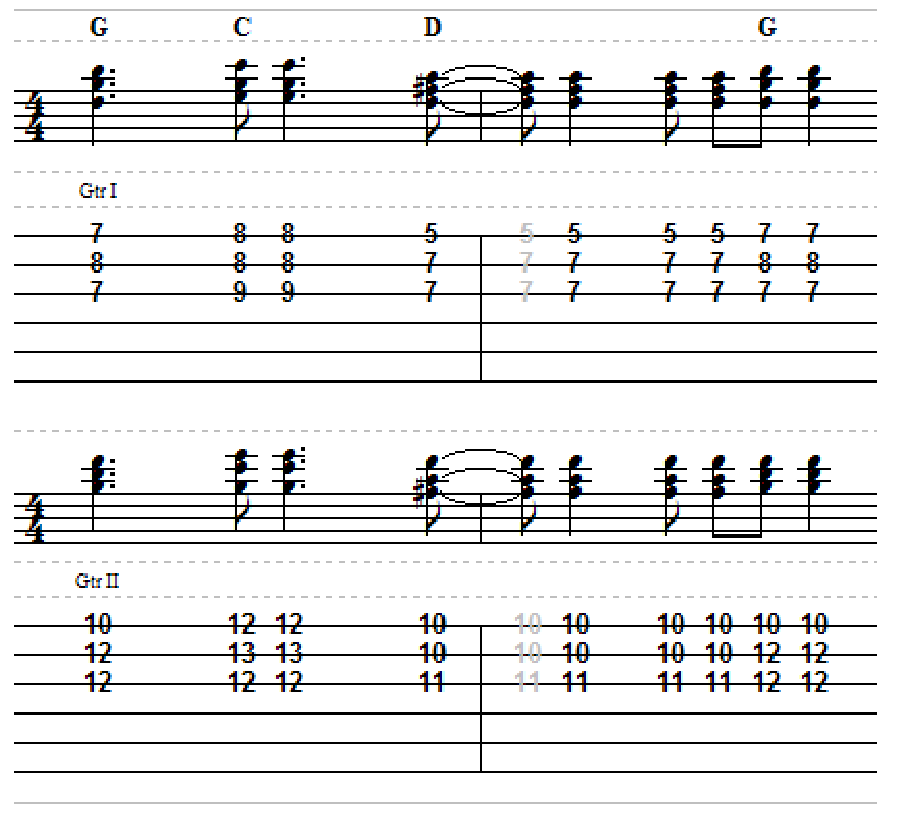
(Note: the second guitar, labeled “Gtr II” is actually a bagpipe. I know it sounds funny, but it will help you differentiate the two guitars.)
NEAT: The IV chord two frets higher equals the V chord, so you can ‘enlarge’ all three chord fragment/families so that you have two V chords to choose from, like this:

The reverse also is true. The V chord two frets LOWER is the IV chord. You have two IV chords now that you can choose from, like this:

Exercise 2:
